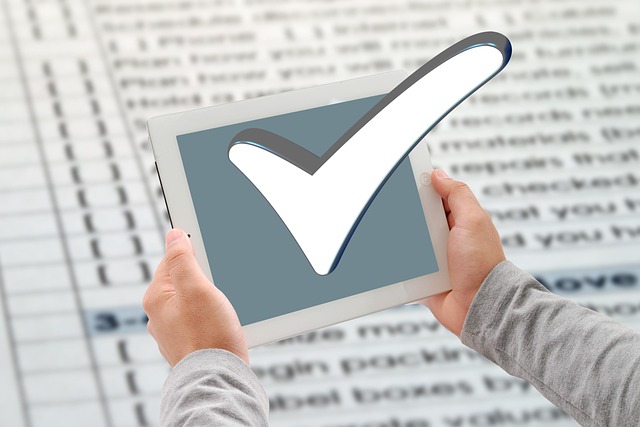Social media platforms collect vast personal data through tracking user behavior and interactions, raising privacy concerns. Users can protect their information by customizing privacy settings, being selective with shared content, understanding data collection practices, and employing secure browsing habits, ensuring explicit consent for data use and enhancing overall data protection checks. Data protection laws like GDPR promote transparency and user rights in this digital landscape.
In the digital age, social media has become an integral part of our daily lives, but its impact on privacy is a growing concern. This article explores how social media platforms handle user data and its implications for check privacy. From data sharing practices to tracking advertisements, we delve into the intricacies of online privacy. Learn about user control through privacy settings, the potential dangers of data collection, and existing laws aimed at protecting personal information. Discover secure browsing practices to safeguard your data in an era where every ‘like’ and share contributes to a complex digital landscape.
- Social Media's Role in Data Sharing
- Privacy Settings: User Control
- Tracking and Targeted Advertising
- The Dark Side of Data Collection
- Data Protection Laws and Enforcement
- Secure Browsing Practices for Users
Social Media's Role in Data Sharing

Social media platforms have become powerful tools for connection and information sharing, but they also play a significant role in data protection checks. When users interact on social media, they often voluntarily share personal details such as names, locations, interests, and even intimate aspects of their lives. This data is then collected, analyzed, and utilized by the platforms themselves, advertisers, and other third-party entities. While social media companies implement privacy settings and policies to safeguard user information, the sheer volume of shared content makes it challenging to maintain complete anonymity.
Data protection checks are crucial in ensuring that personal information remains secure and is used responsibly. Users must be mindful of the data they choose to share publicly and understand the implications for their privacy. By adhering to best practices, such as adjusting privacy settings, being cautious about friend requests, and carefully considering the content they post, individuals can better protect their personal details from unwanted exposure and potential misuse.
Privacy Settings: User Control

Social media platforms offer a range of privacy settings that give users control over their personal information and how it’s shared. These settings allow individuals to tailor their online experience, choosing what data they want to make public and what they prefer to keep private. By enabling these controls, users can conduct thorough data protection checks, ensuring their sensitive information is not exposed to unintended audiences.
For instance, most social media sites permit users to manage who can view their posts, limit access to specific networks or individuals, and even delete historical data. Understanding and utilizing these privacy settings are crucial steps in maintaining a secure online presence, safeguarding personal details from potential threats, and fostering a sense of control over one’s digital footprint.
Tracking and Targeted Advertising

Social media platforms have become powerful tools for tracking user behavior, collecting vast amounts of personal data through various activities like browsing history, location check-ins, and engagement with content. This data is then used for targeted advertising, allowing companies to deliver personalized ads based on users’ interests and demographics. While this practice offers benefits in terms of tailored marketing experiences, it raises significant concerns regarding data protection checks. Users often unknowingly share sensitive information, which can be exploited for commercial gains without their explicit consent.
The process involves sophisticated algorithms that analyze user interactions, creating detailed profiles for targeted ad campaigns. This level of personalization can be seen as an enhancement to the user experience, but it also opens doors to potential privacy breaches. Data protection checks are necessary to ensure that users’ private information remains secure and is not exploited for commercial or malicious purposes, maintaining a healthy balance between personalized experiences and individual privacy rights.
The Dark Side of Data Collection

The rise of social media has been accompanied by an alarming trend in data collection, often at the expense of user privacy. Platforms meticulously track user behavior, gathering vast amounts of personal information through likes, shares, and even biometric data from devices. This extensive data collection raises significant concerns about privacy and security. Users may not be fully aware of the extent to which their data is being monitored and utilized, leading to potential breaches of trust.
The process of collecting and analyzing this data often involves sophisticated algorithms and artificial intelligence, allowing companies to create detailed user profiles. While targeted advertising benefits some users, it also opens doors for malicious actors to conduct identity theft, manipulate public opinion, or even influence political outcomes. Data protection checks are more crucial than ever to ensure that personal information remains secure and is not exploited without individuals’ explicit consent.
Data Protection Laws and Enforcement

Data protection laws play a pivotal role in mitigating potential privacy risks associated with social media platforms. These regulations, such as the General Data Protection Regulation (GDPR) in Europe, empower users with control over their personal data. One significant aspect is the right to request and receive information about how businesses collect, process, and store individual data, commonly known as data protection checks.
Enforcement of these laws has led to increased transparency from social media companies, who must now clearly communicate their data collection practices. Users are entitled to know what data is being collected, why it’s needed, and how long it will be stored. This shift in power dynamic ensures that individuals can make informed decisions about their online activities, fostering a more accountable and transparent digital environment.
Secure Browsing Practices for Users

In today’s digital era, social media platforms have become a ubiquitous part of our lives, offering both connection and convenience. However, as users scroll and engage, it’s crucial to remember that secure browsing practices are essential for protecting data protection checks. This includes being mindful of the information shared, understanding platform privacy settings, and utilizing security tools like encryption and strong passwords to safeguard personal details from prying eyes.
Regularly updating software and apps, avoiding suspicious links or downloads, and remaining cautious when sharing location data or personal insights are additional measures that enhance online security. By adopting these secure browsing habits, users can mitigate risks associated with social media use, ensuring their privacy checks remain intact while enjoying the benefits of this digital landscape.
